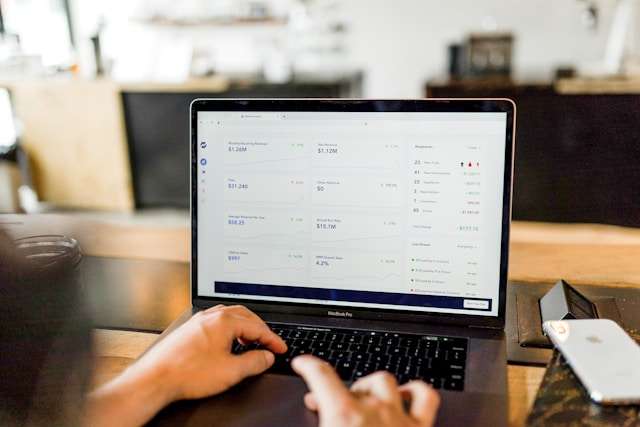WordPress Tips & Tricks 2024: Boost Your Website Performance
Key Takeaways Choose Your Foundation Wisely Select Fast Hosting Pick the Perfect Theme Set Up for Success Google Tools Integration Build Your Business Stack Structure Your Site Organize Site Layout High-Quality Content Enhance Visuals Add Featured Images Boost Your SEO Link-Building Strategies Custom 404 Page SEO Plugin Essentials Streamline Performance Minimize Plugin Use Compress Images Secure Your Website Implement Security Measures Audit and Improve Perform SEO Audit Reduce Clutter Summary Frequently Asked Questions How important is choosing the right foundation for my WordPress website? What steps can I take to enhance the visuals of my WordPress site effectively? Why is securing my WordPress website essential, and what are some key measures I can take? How can I streamline the performance of my WordPress site for optimal user experience? What are the benefits of conducting regular audits and improvements on my WordPress site? Did you know that over 35% of all websites globally are powered by WordPress? With such a vast user base, staying ahead with the latest WordPress tips and tricks in 2024 is crucial for maximizing your website’s potential. Whether you’re a beginner or a seasoned WordPress user, these insights can help you enhance your site’s functionality, design, and performance. From optimizing plugins to improving SEO strategies, this year promises to bring exciting innovations and techniques to elevate your WordPress game. Key Takeaways Choose Your Foundation Wisely: Selecting the right WordPress theme and plugins is crucial for a successful website. Set Up for Success: Start with a clear plan, organize your content, and establish a user-friendly navigation structure. Structure Your Site: Create a logical layout with easy-to-find menus and categories to improve user experience. Enhance Visuals: Use high-quality images, videos, and graphics to engage visitors and make your site visually appealing. Boost Your SEO: Optimize your content with relevant keywords, meta descriptions, and alt tags to improve search engine visibility. Streamline Performance: Regularly optimize your site’s speed, reduce unnecessary plugins, and leverage caching tools for better performance. Secure Your Website: Implement security measures like SSL certificates, strong passwords, and regular backups to protect your site from cyber threats. Audit and Improve: Continuously monitor your site’s performance, analyze user feedback, and make necessary updates to enhance overall functionality. Choose Your Foundation Wisely Select Fast Hosting When choosing a hosting provider for your WordPress site, compare different options based on their speed and reliability. Look for services that offer dedicated support for WordPress to ensure smooth operation. Opt for plans that include automatic backups and robust security features. Compare hosting providers based on speed and reliability Check for dedicated WordPress support Opt for plans with automatic backups and security features Pick the Perfect Theme Consider themes that match your website’s niche and branding to create a cohesive look. Ensure the theme is regularly updated to stay compatible with the latest WordPress versions. Choose responsive themes that provide an optimal user experience across all devices. Consider themes aligning with your website’s niche Look for regular theme updates for compatibility Choose responsive themes for seamless user experience Set Up for Success Google Tools Integration Integrating Google Analytics is crucial for tracking website performance and understanding visitor behavior. By setting up Google Search Console, you can monitor website indexing and analyze search traffic effectively. These tools are essential for enhancing SEO strategies and boosting online visibility. Pros: Detailed insights into website performance. Track user interactions and behaviors accurately. Cons: Steep learning curve for beginners. Requires consistent monitoring and analysis. Utilize various Google tools to optimize your website for maximum reach and engagement. By leveraging these tools, you can identify areas for improvement and tailor your content to meet the needs of your target audience effectively. Build Your Business Stack To ensure your website’s overall success, it’s essential to build a robust business stack that caters to your specific requirements. Implementing WooCommerce provides e-commerce functionalities, allowing you to sell products or services seamlessly online. Utilizing Ninja Tables enables you to create interactive data tables that enhance user experience and engagement. Implement WooCommerce: Seamless integration for online sales. Customizable features to meet your business needs. Utilize Ninja Tables: Create visually appealing and interactive data representations. Enhance user experience with dynamic table functionalities. Incorporating Fluent Forms into your website allows for easy form building and lead generation. These forms are user-friendly, making it simple for visitors to engage with your content and provide valuable feedback or inquiries. Structure Your Site Organize Site Layout When building a wordpress site, it’s crucial to focus on site structure and website design. Ensure your website has a clear and organized navigation system for users to easily access different sections. Utilize categories and tags efficiently to group related content, making it simpler for visitors to find what they are looking for. By structuring your site effectively, you enhance the overall user experience and encourage visitors to explore more of your content. Benefits: Improved user experience Higher engagement rates Better SEO optimization Challenges: Time-consuming to organize content Requires regular maintenance to update navigation Creating a well-organized wordpress site involves optimizing the site layout for intuitive navigation. This includes placing important information in prominent positions, making it easy for users to locate key pages. By focusing on user experience, you can ensure that visitors have a seamless browsing experience, leading to increased time spent on your site. High-Quality Content To attract and retain visitors to your wordpress site, it’s essential to focus on producing high-quality content. Engage your audience with valuable information that is both insightful and relevant to their needs. By prioritizing originality in your content creation process, you can set your site apart from competitors and establish credibility with your audience. Tips: Conduct keyword research for SEO optimization Regularly update and refresh content to keep it current Examples: Including how-to guides Showcasing customer testimonials Incorporating multimedia elements such as images and videos into your content can significantly enhance its quality. Visual aids not only make your content more engaging but also help convey information more effectively. By utilizing a mix of









